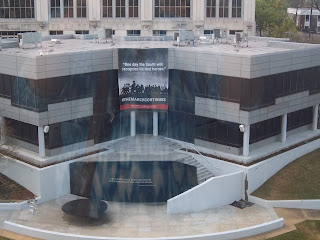The Skokie Festival of Cultures
Growing up in New York,
one of my favorite activities was visiting the United Nations. I loved watching
the Security Council meetings or any other meetings so that I could press the
buttons on the headphones to hear people speaking in all the official U.N.
languages. There were six buttons – for English, French, Spanish, Russian,
Chinese, and the language of whoever was speaking. Even though I didn’t know
the other languages, I loved hearing the sounds of people speaking them. It was
music to my ears.
Now that I’m an adult and
living in Skokie-Evanston, Illinois, I no longer have to press buttons. All I
have to do is attend the Skokie Festival of Cultures. This year was the
Festival’s 29th. This year’s
theme was music. People from 38 countries had organizations participating in the
Festival.
We were there for the
opening ceremonies. People marched with their flags from Armenia, Assyria,
Azerbaijan, Bangladesh, Belize, Bulgaria, Cambodia, the Cameroons, People’s
Republic of China, Chinese Republic of China, Circassia, Croatia, Cuba,
Estonia, the Filipines, Finland, Greece, India, Iraq, Ireland, Israel, Jamaica,
Japan, South Korea, Laos, Lithuania, Luxembourg, Mexico, Norway, Pakistan,
Russia, Sweden, Thailand, Tibet, Turkey, the United States, and Uzbekistan.
When each one came to the
stage, “Welcome to the Skokie Festival of Cultures” was said in that language
and a few bars of their music was played. When they were finished, we all sang
the “Star Spangled Banner” together and said the Pledge of Allegiance. It is on
our currency E Pluribus Unum. From many one. The anthem and pledge reminded us
all of our origins as immigrants. It is always a joy to watch things going
right. I wished that I could invite the rest of the United States to see how
it’s done.
After the opening
ceremonies, we went to see the booths of each country to admire their crafts
and talk to the people there. Where else can someone meet people from all these
countries in less than an hour?
We were going to return
to the outdoor venue to watch the different groups dance their dances or sing
their songs. Unfortunately, the sky
darkened and rain was imminent. We went indoors to see some other performances.
Humanity followed us in from the four corners of the world. Together we watched
dancers from Arabia, Japan, and Uzbekistan. Outside, the rain came down in
torrents and we almost needed to build another Ark to get home. The dancers
were beautiful. Despite the deluge, the day was a ray of sunshine.


































